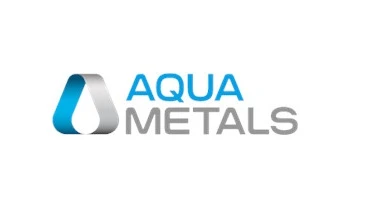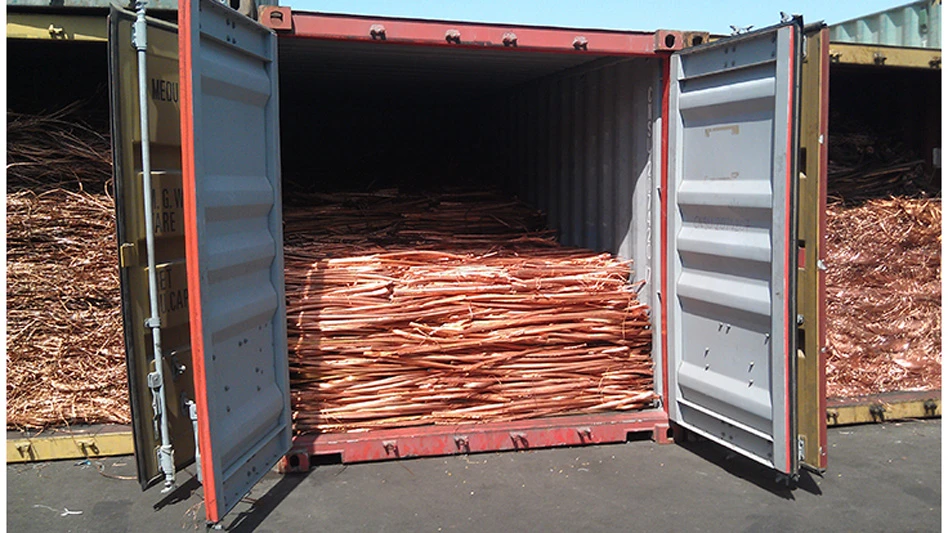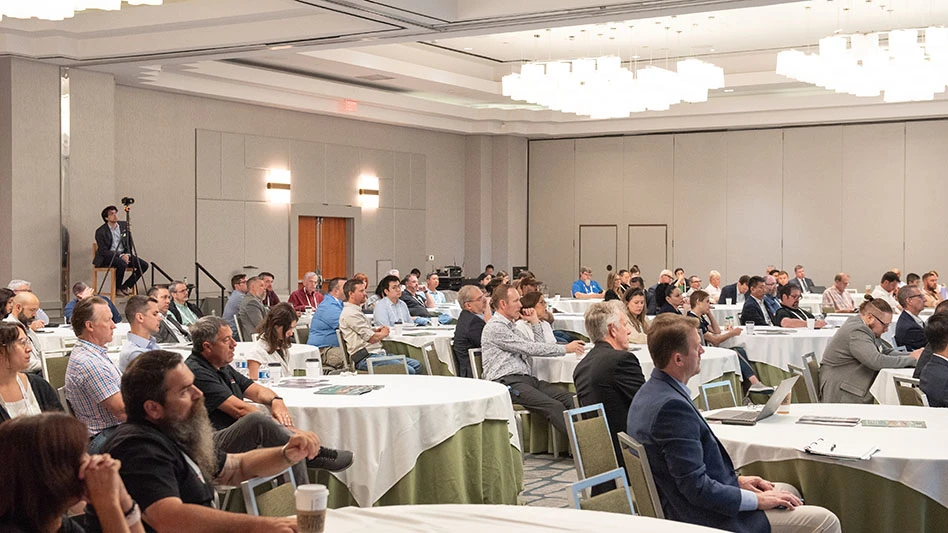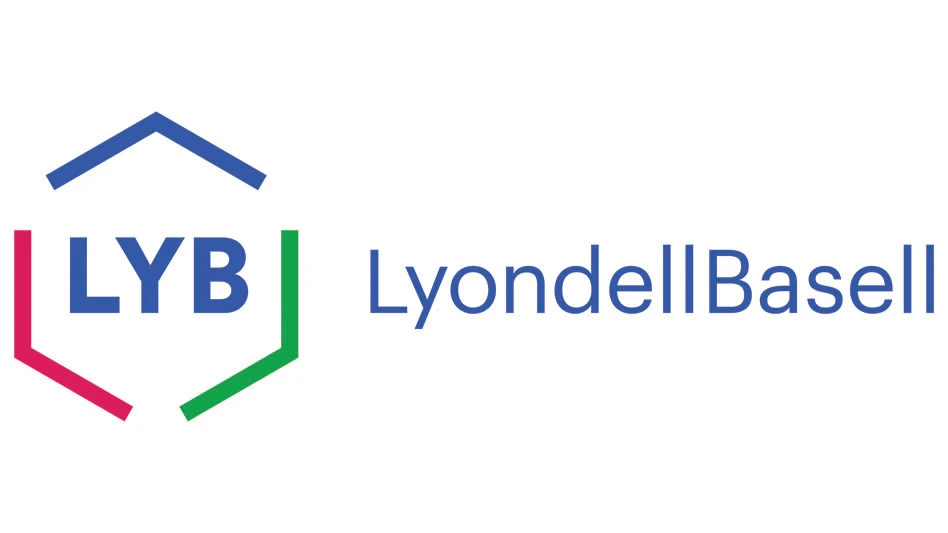The right sorting equipment is critical if recyclers want considerable profits to count.

In densely populated urban areas, such as Chicago, Cleveland and other major cities, municipalities are pushing waste haulers to maintain recyclable collection services, but to keep it simple and single. That is,simple for the general public that wants to continue to recycle, but does not want to do the sorting at home. Instead, households are commingling their recyclables into a single stream, placing them on their front lawns and having the waste hauler pick them up, often to be placed in a compacting truck.
However, what is simpler for the household, and the hauler, becomes harder for the recycler. This trend toward commingled collection has forced recyclers to build new material recycling facilities (MRFs) or to overhaul existing ones in order to handle the single stream. One company familiar with this trend is Waste Management Inc., Houston, with offices, plants and operations throughout the U.S. Waste Management has a unique perspective because it is a cradle-to-grave recycler that does the collecting, hauling, processing and reselling of municipal recyclables.
“Most single-stream MRFs are operating due to requests made by the local municipalities where the recyclables are collected,” says Jerry Hawk, Southeast regional manager for Waste Management’s material marketing group in Norcross, Ga. “But we, the collector and processor, have to make sure that the volume is there first in order to invest the millions of dollars in mechanical sorting equipment required for the MRF to be profitable.”
Scott Jable, Midwest regional manager of Van Dyk Baler Corp. in Chicago, agrees, but also contends that there is a benefit for the hauler, too. “Half of the push is by the consumers who commingle recyclables at home,” he says. “The other half of the push is from haulers, because it is easier for them. Route times are decreased, labor is decreased, and they can use trucks that are less expensive to operate.”
Once the volume is in place, it is up to the MRF operator to employ an efficient operation in order to process the recyclables. Generally, in single-stream MRFs the process involves some manual sorting/inspection, mechanical screening, the use of magnets and possibly some optical devices. For shipping end products, balers will also be needed.
Get The Paper Out First
Screens, trommels and other mechanical devices normally are found at the front of a single-stream operation in order to separate out the paper and then get it out of the way. From the tipping floor to the conveyor, many single-stream material recycling facilities use employees to ensure bags are broken and discarded and other debris is removed from the mix. Some may employ bag breakers if blue plastic bags are commonly used by households to gather recyclables.
While screens and trommels are still popular for separating material of varied sizes, problems with clogging can limit their effectiveness. Other devices, such as finger and vibrating screens, improve recovery rates, and rotating star or cam screens are used in processing a number of different materials streams in all recycling segments.
Last year, Waste Management installed a new sorting line at its MRF in Oakwood, Ohio. The facility serves several communities in northeast Ohio. The Oakwood plant has been performing some type of recyclables sorting since 1992. According to Jamie Yommer, plant manager at Oakwood, the single-stream system involves approximately five major stages. The first is an initial sort by people to remove any unwanted garbage that made it in the stream, plus the hand sorting removes any cardboard. Normally, cardboard is not a high-volume item collected in municipal recycling programs.
The second stage is a Lubo (mechanical) screen that splits the main stream into two – paper products and non-paper. The paper stream goes through another mechanical sort (stage three) combined with quality control workers who monitor and help where needed. The paperless stream now only has plastic and glass containers and tin and aluminum cans, plus other ferrous and nonferrous recyclables.
The fourth stage involves an overhead magnet that pulls out any ferrous scrap, and the fifth stage is an eddy current separator for the aluminum cans. Yommer says that the system is working well. Waste Management switched to the single-stream concept at the plant simply because the general public is unwilling to sort recyclables at home, according to Yommer. “They will take the time to separate the recyclables from the garbage, but will not take the time to separate those recyclables further into specific categories,” he says.
No matter how many stages a MRF employs, the first stage or stages are geared toward getting the paper out, according to Hawk. “First, if your customers use plastic bags, you have to have employees breaking open bags or bag breakers – then you have to have some sort of screen to get any grit out,” he says. “Next, focus on sorting the paper. At our Birmingham, Ala., plant we have a paper-sorting device called the Banana. I think we are the first company to own one in the U.S. It has rotating fingers that bounce material upward while the whole device is set on an incline.” Hawk likens it to a shaker table used in the mining industry – as the lighter material is bounced up it eventually goes over and forward; however, the heavier (denser) material moves downward and falls through the screen. “Right now we are trying to determine the optimum angle for our sort,” he says. “I guess that is why it is called the Banana, because it has a slope like a banana.”
The French Banana Screen is made by Dutch equipment maker Lubo and marketed in the U.S. by Van Dyk Baler Corp. The name derives both from its shape and from its first installation, which was in France.
Jable of Van Dyk says MRF operators should look closely at what type of paper they are screening for. “I think what the MRF operator has to decide on the onset is whether to screen for #6 or #8 news, because there are different screening technologies for each,” he says. But regardless of what route is taken, Jable says to get the cardboard out of the stream first either manually or by screening. “Star screens are ideal for this,” he says. “Once the OCC is out, get any trash out, such as plastic bags and light items.” Jable recommends a series of screens to get all the fiber out of the stream.
|
The Scrap Scene |
|
Some scrap recyclers might still get by without using any mechanical separation equipment, but such limitations would definitely restrict them from taking in the modern flow of obsolete scrap. Today’s vehicles, appliances and other objects flowing into the scrap yard invariably consist of a mixture of steel, iron, nonferrous metals, plastics and other materials. For scrap recyclers who use shredders to process this stream, the post-shredder separation system has become critical to creating a set of profitable products. As outlined in a feature in last year’s Recycling Today Shredder Guide (“Premium Grade Effort,” Recycling Today, July 2001, Pg. S16), Ferrous Processing & Trading Co., Detroit, has created a plant to which it takes the non-iron-bearing portion of its shredder streams for an intensive sorting and separating regimen. At its Warren, Mich., facility, the company uses trommel screens, eddy current separators, a sand flotation system, manual sorters and optical sensor machines to create the purest nonferrous grades possible from the mixed stream that comes in. The idea is not only to squeeze the highest recyclable material percentage from its shredders, but also to produce higher grades of aluminum, copper, brass, stainless steel and zinc to fetch a premium from secondary commodity buyers. The practice is not new. Huron Valley Steel Corp., Belleville, Mich., has long been a destination for the nonferrous and nonmetallic portions of auto shredder streams. The company is known for its pioneering techniques to separate mixed non-ferrous metals using a variety of different technologies. Huron Valley claims to process some one billion pounds annually (500,000 tons) of nonferrous metals derived from downstream shredder and other sources and shipped to its seven U.S. and one European locations. The desire to recover nonferrous metals from obsolete items has spread beyond the auto shredder segment, and now includes cable and wire processing and electronics recycling as well. Wire choppers have been in business for many years, but they have evolved to include a thorough mechanical separating of materials, so both metals smelters and plastics recyclers receive pure secondary commodities. The electronics stream—which can include computers, peripherals, fax machines, copiers, telephones and small appliances—presents a mixture of materials just as complex (if not more so) than what is seen by auto shredders. That is probably why shredding and downstream separating systems are now being pioneered in this segment. —Brian Taylor |
Moving bottles
Electronic imaging, one of the newest additions to the family of sorters, has been used in the recycling industry for not much more than a decade. These types of sorters are used mainly to separate plastic bottles by resin and/or color, and glass by color. Imaging includes infrared sensors and optics. When a sensor reads or identifies the resin or color characteristics of the bottle, the data is fed to a computer that immediately locates the position of the bottle on the conveyor and triggers a pinpoint blast of air from a pneumatic system that removes the bottle from the stream.
The challenge in this type of sorting is not the way the material is sorted, but the speed at which this sorting can occur. Advances over the years have made optic sorting better suited for high-volume material recycling facilities as these systems have improved to handle higher throughputs. Placing the plastic sorter toward the end after all other recyclables are removed from the stream increases efficiency.
“The optic systems definitely should be after the paper sort, either prior to the magnet sort or after, depending on the setup,” says Felix Hottenstein, sales director of MSS Inc., Nashville, Tenn. “[It can be ideal for] some plastic sorting equipment that is designed to sort only plastics into PET and HDPE streams, or to color-sort plastic bottles.” MSS’s Sapphire system uses eight switches – each one corresponds to a different type of plastic or carton (only one switch can be employed at a time). The company’s new Aladdin plastic sorter is used primarily to sort PET or HDPE and can sort out in three separate batches of color. Hottenstein notes an Aladdin plastic sorter is used at a MRF owned by Todd Heller in Northampton, Pa.
However, adding an optic sorting device may be cost-prohibitive at some MRFs. “Most single-stream MRFs won’t have that much plastic – maybe a ton or two an hour, and two people can manually sort that amount without a problem,” says Jable. “The majority of single-stream MRFs I work with use manual labor to sort the plastics, which then can be baled and shipped.”
Waste Management ships its commingled plastic bottles to PREI, currently located in Youngsville, N.C., (PREI will soon be moving south to Raleigh, N.C. to consolidate with its glass operation and a new MRF.) PREI is a subsidiary of Recycle America and owned by Waste Management. “We found that it was more cost effective to sort out our plastics as a commingled stream, then ship them to PREI, which does the final sorting by resin and color,” says Hawk.
PREI recently installed new proprietary equipment that has only been operational since last December. “It’s equipment that was designed specifically for us, and I can’t tell you much more than that,” says Tom Draney, general manager of PREI. He did say that PREI’s new plastic sorting system has a throughput of about 5.5 million pounds (2,750 tons) of plastic containers a month. The system performs a resin sort (PET and HDPE), then a color sort into four streams of natural HDPE, color HDPE, clear PET and green PET. After the sort and some quality control by employees, the plastic streams are then ground into flake, according to Draney. The flake is sold to end users for carpet fiber, and to SEC, Winchester, Va., which turns the resin back into bottles for Coca-Cola. “It’s the only process I know of that turns commingled plastics into bottle-grade plastic,” says Draney.
PREI gets about half of its recyclables from Waste Management MRFs, and the rest from other companies. “An independent MRF operator that has a single-stream plant has to seriously analyze the profitability of sorting the commingled plastics in-house or shipping them baled to a secondary processor like us,” says Draney. “I would say that if the MRF is getting predominantly one type of plastic, then it probably makes more sense to sort in house, but if the plastic stream is mixed, then they can ship it to us for follow-on processing. (Draney welcomes new customers and says those interested should call PREI in Youngsville, N.C., for a quote.)
|
Sorting C&D Style |
|
Recyclers of material generated at construction and demolition (C&D) sites are as dependent on separating equipment as business owners in any other recycling segment. The nature of the sorting task faced by this recycling segment gained national prominence after the attacks of September 11. Demolition contractors on the scene at the World Trade Center faced a number of challenges, including the recovery of bodies and personal effects from the piles of debris that resulted from the attack. At nearby company sites, the skills of C&D recyclers have again been called upon for purposes of clean up, recovery and even crime scene investigation. Taylor Recycling Facility LLC, Montgomery, N.Y., has received a considerable quantity of debris hauled in from the World Trade Center site. The federal government named the firm its “vendor of choice” on the project. The company subsequently acquired and mobilized more than $2.5 million worth of screening equipment, picking stations, loaders and excavators in order to handle separation, sorting and recycling of building debris from the World Trade Center. Among the equipment the company has been using is screening equipment from Erin Systems, Portland, Maine, that mechanically separates material based on size and weight. Taylor Recycling established operations at the Fresh Kills Landfill site on Staten Island. The company has also supervised union operating engineers in an around-the-clock project processing the materials that are barged to the landfill site from Ground Zero in Manhattan. Additionally, the company has worked with the NYPD, FBI, CIA, U.S. Customs, and the New York and New Jersey Port Authorities as they retrieve evidence from what has been called the largest crime scene in history. Taylor was selected “vendor of choice” for the project on September 25, 2001, by the federal government following two weeks of contract negotiations among several competing firms. By October 14, Taylor began operations. There are several companies involved at the Fresh Kills site in various removal tasks, including one other engaged in operations similar to Taylor’s. “When we saw what was needed at Fresh Kills, we knew we could help. There are only a handful of companies in the state or nation with the equipment, expertise and wherewithal to handle this kind of service,” says Hans Taylor. The company has recently opened a $3 million, 35,000 square foot C&D processing building in Montgomery. The facility was just completed this spring. Such equipment investments are becoming increasingly common for C&D recyclers. Bill Clark of General Kinematics Corp., Barrington, Ill., says finger screens can be very productive for C&D recyclers and have recently been integrated into systems with capacities of up to 500 cubic yards per hour. A dual finger screen by General Kinematics is receiving and sizing material at eight-inch sizes in one recently installed system. According to Clark, finger screens are ideal for C&D recycling because they are inherently self-relieving and less susceptible to jamming or material hang ups in difficult C&D sorting applications. Clark notes that several C&D contractors are currently using de-stoners/classifiers to recover clean stone and aggregate. —Brian Taylor |
Hottenstein also says that the MRF operator may have to add equipment after the fact if the incoming stream changes because of a change in public buying/recycling habits. “One MRF had to install our glass sorting system because they found that they were getting a higher volume of glass than expected, and half of that glass was flint. Combined with the high tipping fees that the MRF was getting, it made sense to install a glass sorting system.”
A MRF in the Tidewater region of Virginia had a similar situation. “They installed a special system that breaks the glass into a commingled stream because there is a market for it,” says Jable.
Magnet Configurations
Any single-stream MRF that expects to be cost effective must employ magnets to sort the ferrous and aluminum scrap. Magnetism currently is the only way to do this without manual sorting. In single-stream configurations, the majority of the magnetic separation occurs toward the end of the sorting line. This is because it is easier to pull ferrous material out of the stream after bulky items such as cardboard and paper have been removed. Once all ferrous material is removed by a magnet, the remaining contents of the stream is passed over an eddy current separator that bounces out the aluminum scrap, consisting mainly of cans.
Magnets and eddy current separators are the mainstay of ferrous and nonferrous processing in any MRF. Magnets used for this purpose are either in an overhead configuration or underneath the conveying belt in a head pulley. Either type of magnet can be permanent or electromagnet. The main benefit of the electromagnet is that it can be turned off when it is not needed or to conduct maintenance. The primary benefit of the permanent magnet is that it does not need a power source.
Overhead models have their own mini- conveyor, or belt, with cleats so when ferrous material is pulled out of the stream, the action either drops the ferrous on another conveyor in a cross-belt configuration, or beyond a splitter in an in-line situation. These magnets are usually referred to as self-cleaning. At Waste Management’s Oakwood MRF in northeast Ohio, an overhead magnet is used toward the end of the single-stream line.
Because the magnet is positioned above a moving stream of scrap, the magnetic field has to be strong enough to pull ferrous material up, against the pull of gravity, and be able to reach down into the bottom of the stream trough. This is why positioning the overhead magnet toward the end of the stream is key to a successful operation—because there is less overall material to get in the way.
In addition, once the bulky recyclables are sorted out of the way, the MRF operator can position the overhead magnet closer to the stream, making it more effective. “A MRF that can position its overhead magnet within 12 inches of the line can use a permanent magnet, which is generally less expensive,” says Don Morgan, product manager of Walker Magnetics, Worcester, Mass. Morgan, who is based in Milwaukee, Wisc., and has more than 50 years in the magnet business, says that “if the magnet has to be placed higher than 12 inches, then the MRF should switch to a more powerful electromagnet that can generate a field that will reach down to the stream.”
Overhead magnets can pull out long or large pieces of ferrous scrap, but there could be problems with trapped metal. Pulley magnets can eliminate the trapped metal problem, but long pieces of ferrous could carry through, or ferrous could get trapped on top of a nonferrous or nonmetallic piece. The most effective systems will use a combination of the two, according to Morgan. He adds that it is better to have the eddy current separator after the magnets because any ferrous material mixed in with the nonferrous cans can cause complications.
The author is a Recycling Today contributing editor who can be contacted via e-mail at mdphillips@core.com.
|
Single-Stream a Conference Topic |
|
As single-stream processing grows, there are resulting questions about a slip in paper grade quality. At the 2002 Paper Recycling Conference & Trade Show, Recycling Today editor Brian Taylor will moderate “Single Stream: Pros and Cons,” a session covering both the advantages of single-stream processing systems, as well as some of the potential drawbacks. The session, scheduled for Monday, June 24, 2002 from 4:00 - 5:00 p.m., features panelists: • Steve Ragiel of Waste Management Inc. • Rina McGuire of Cascades Inc. • Harvey Gershman of GBB Consulting. The 2002 Paper Recycling Conference & Trade Show takes place June 23-25 at the Hyatt Regency in New Orleans. For a complete conference program, visit the 2002 Paper Recycling Web Site, www.PaperRecyclingConference.com, or call the GIE Media Conference Department (800) 456-0707. |

Explore the May 2002 Issue
Check out more from this issue and find your next story to read.
Latest from Recycling Today
- APR, RecyClass release partnership progress report
- Clearpoint Recycling, Enviroo sign PET supply contract
- Invista expanding ISCC Plus certification program
- Redwood partnership targets recycling of medium-format batteries
- Enfinite forms Hazardous & Specialty Waste Management Council
- Combined DRS, EPR legislation introduced in Rhode Island
- Eureka Recycling starts up newly upgraded MRF
- Reconomy Close the Gap campaign highlights need for circularity





